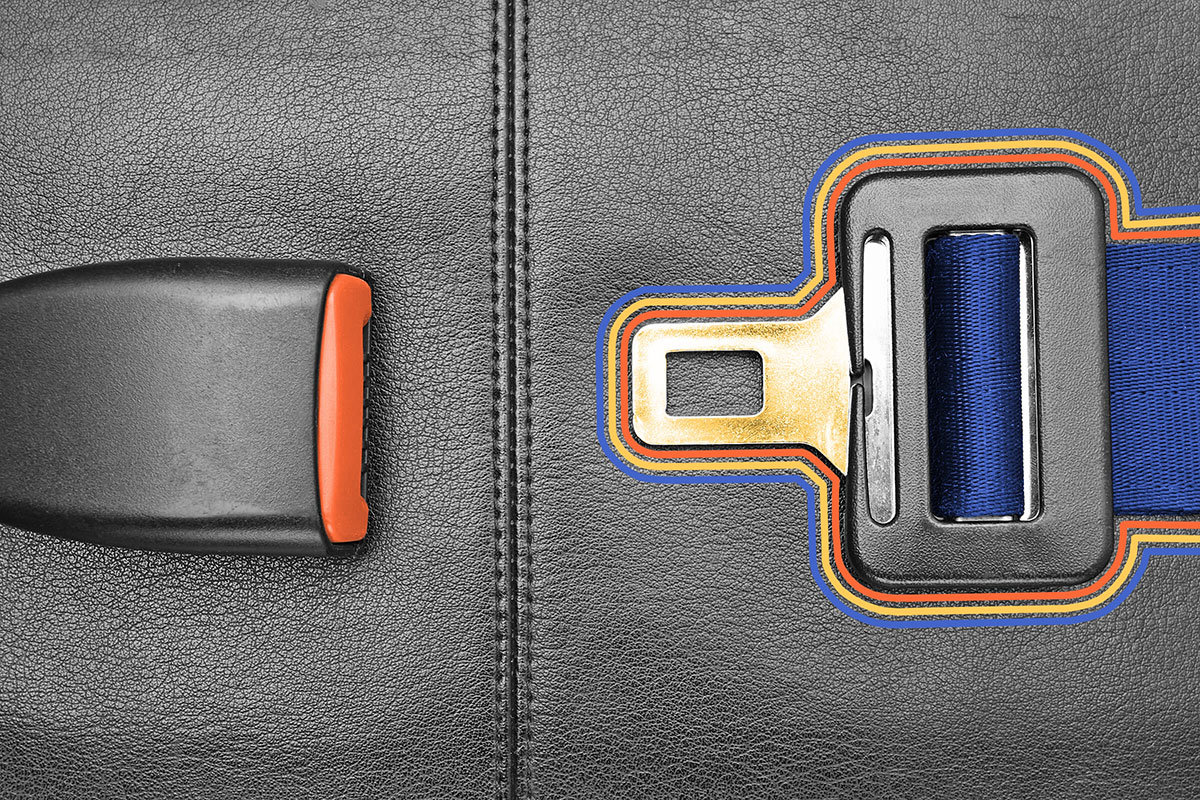
Volvo gave away its seat belt patent to save lives.
Few people in history are credited with saving millions of lives, but one person who did so worked for Volvo. Swedish engineer Nils Bohlin’s improvement on the three-point seat belt has helped drivers (and passengers) safely reach their destination for more than six decades.
Seat belts are a standard feature in today’s cars and trucks, but it hasn’t always been that way. In the 1950s and ’60s, car manufacturers weren’t required to include safety belts in vehicles. When they were built in, the earliest seat belts were simple two-point restraints that secured across the waist (aka lap belts). While a step in the right direction, lap belts had some downsides — they didn’t protect the upper body during a collision and could even cause injuries during high-speed crashes. A three-point design was created in 1951 by Americans Roger W. Griswold and Hugh DeHaven, but it never took off, likely because it was uncomfortable.
Recognizing these issues, Swedish carmaker Volvo hired Bohlin (a former aviation engineer who helped create pilot ejection seats) as the company’s safety engineer, and tasked him with a redesign. Bohlin’s creation — a more comfortable V-shaped belt that stays in position across both the chest and hips — was drafted in under a year, and is the style used in cars today. Volvo added the belts to its cars in 1959, before the inventor even secured a patent. But when he did, Bohlin and Volvo didn’t look to profit off of the safety feature. Instead, they released the design publicly, urging all car manufacturers to add the upgraded belts. After years of presentations and crash test dummy demos, Volvo eventually made headway — the evidence of which is found in our cars today and credited with saving lives around the world.
The National Highway Traffic Safety Administration relies on a whole crew of crash test dummies to better understand the mechanics of collisions and to make car travel safer. Each one of those mannequins is a descendant of Sierra Sam, the very first research dummy. Introduced in 1949, Sierra Sam was the work of Samuel W. Alderson, a physicist and inventor who developed motors for missile guidance systems during World War II and motorized prosthetic arms for IBM. Alderson’s first dummies were used by the U.S. military to test pilot helmets and harnesses, parachutes, and plane ejection seats. Sierra Sam even made his way into NASA’s tests for the Apollo space capsule. Alderson then developed a dummy, called the VIP-50, for automobile testing in 1968. In the years since, dummies have been improved and packed with technology and sensors that today require up to five months of construction and $1 million in costs.

